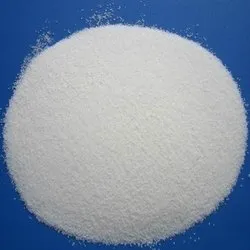Various industries worldwide use PVC (Polyvinyl Chloride) extensively, from construction and medical devices to automotive parts and packaging. At the heart of PVC production lies the intricate process of creating PVC Suspension Resin, a form of resin that holds pervasive significance due to its unique properties and applications. This article explores what PVC Suspension Resin is, how producers make it, its unique uses, and the environmental considerations it involves.
Introduction to PVC Suspension Resin
Often unnoticed by the everyday consumer, PVC Suspension Resins are crucial in fabricating numerous products that we use daily. Manufacturers produce these resins by suspending vinyl chloride monomer (VCM) particles in water during a polymerization process. This method, known as suspension polymerization, results in a granular form of PVC that is both highly pure and incredibly versatile.
- What is PVC Suspension Resin?
- Production Process
- Unique Properties and Advantages
Production Methods
Creating high-quality PVC Resin involves several meticulous steps to ensure the final product meets strict industry standards for both performance and safety.
The Polymerization Process
The polymerization of VCM takes place in a reactor filled with water and other additives. These ingredients help kickstart and control the reaction that leads to the formation of PVC. We need to monitor this process precisely to ensure the quality and consistency of the resin.
Key Stages of PVC Polymerization
- Initiation: Activators and catalysts are introduced to trigger the polymerization reaction.
- Propagation: Monomer molecules join to form polymer chains.
- Termination: We cool the reactors and stop the reaction at the desired time to ensure ideal molecular weight and particle size.

Uses and Applications
PVC Suspension Resin finds its way into various applications, benefiting from its superior properties such as strength, durability, and resistance to environmental factors.
Building and Construction
In building and construction, PVC is known for its role in windows, doors, and piping. Its ability to withstand moisture and corrosion makes it an ideal choice for these applications.
Medical Devices
PVC’s non-reactive nature is perfect for medical tubes, blood bags, and containers. It ensures that no harmful chemicals leach into the materials stored inside.
Automotive Industry
In vehicles, PVC is used in dashboards, interior panels, and underbody systems. Its flexibility and durability contribute to both aesthetics and functionality.
Environmental Considerations
While PVC is incredibly useful, its environmental impact is a topic of ongoing debate. The production of PVC involves chemicals that, if not managed properly, can be harmful to the environment.
Challenges and Improvements
- Manufacturing processes are continuously improved to reduce emissions and waste.
- Recycling programs and advancements in bio-based PVC alternatives are being developed to mitigate environmental impacts.
Conclusion
PVC Suspension Resin is a fundamental material that underpins many modern conveniences and necessities. Understanding its production, applications, and environmental impacts provides insights into a material that, while often out of sight, should not be out of mind. Encouraging responsible production practices and incorporating innovative recycling methods are crucial as we move forward, ensuring that we can continue to rely on PVC’s benefits while minimizing its ecological footprint.
Remember to stay informed and consider the materials you choose in your projects or products—each decision can contribute to a more sustainable future.






Pingback: PVC Resin Suppliers - Safe Climber Overseas Pvt. Ltd. - Safe Climber Overseas Pvt. Ltd.